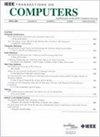基于变压器增强深度强化学习的可重构智能表面辅助无人机- mcs
IF 3.8
2区 计算机科学
Q2 COMPUTER SCIENCE, HARDWARE & ARCHITECTURE
引用次数: 0
摘要
移动人群传感(MCS)是一种新兴的模式,它使参与者能够在各种传感任务上进行协作。无人机越来越多地集成到MCS系统中,以提供更可靠、更准确和更具成本效益的传感服务。然而,优化无人机轨迹和通信效率,特别是在非视距(NLoS)信道条件下,仍然是一个重大挑战。本文提出了一种变压器增强深度强化学习(DRL)算法TRAIL。TRAIL旨在共同优化无人机轨迹和可重构智能表面(RIS)相移,以最大化数据吞吐量,同时最小化无人机能耗。优化问题建模为马尔可夫决策过程(MDP),其中Transformer架构捕获无人机轨迹中的长期依赖关系,并将这些特征输入到具有优先体验重播(PER-DDQN)的Double Deep Q-Network中,以指导智能体学习最优策略。仿真结果表明,TRAIL在数据吞吐量和能源效率方面都明显优于最先进的方法。本文章由计算机程序翻译,如有差异,请以英文原文为准。
Reconfigurable Intelligent Surface Assisted UAV-MCS Based on Transformer Enhanced Deep Reinforcement Learning
Mobile crowd sensing (MCS) is an emerging paradigm that enables participants to collaborate on various sensing tasks. UAVs are increasingly integrated into MCS systems to provide more reliable, accurate and cost-effective sensing services. However, optimizing UAV trajectories and communication efficiency, especially under non-line-of-sight (NLoS) channel conditions, remains a significant challenge. This paper proposes TRAIL, a Transformer-enhanced deep reinforcement Learning (DRL) algorithm. TRAIL aims to jointly optimize UAV trajectories and Reconfigurable Intelligent Surface (RIS) phase shifts to maximize data throughput while minimizing UAV energy consumption. The optimization problem is modeled as a Markov Decision Process (MDP), where the Transformer architecture captures long-term dependencies in UAV trajectories, and these features are input into a Double Deep Q-Network with Prioritized Experience Replay (PER-DDQN) to guide the agent in learning the optimal strategy. Simulation results demonstrate that TRAIL significantly outperforms state-of-the-art methods in both data throughput and energy efficiency.
求助全文
通过发布文献求助,成功后即可免费获取论文全文。
去求助
来源期刊

IEEE Transactions on Computers
工程技术-工程:电子与电气
CiteScore
6.60
自引率
5.40%
发文量
199
审稿时长
6.0 months
期刊介绍:
The IEEE Transactions on Computers is a monthly publication with a wide distribution to researchers, developers, technical managers, and educators in the computer field. It publishes papers on research in areas of current interest to the readers. These areas include, but are not limited to, the following: a) computer organizations and architectures; b) operating systems, software systems, and communication protocols; c) real-time systems and embedded systems; d) digital devices, computer components, and interconnection networks; e) specification, design, prototyping, and testing methods and tools; f) performance, fault tolerance, reliability, security, and testability; g) case studies and experimental and theoretical evaluations; and h) new and important applications and trends.
 求助内容:
求助内容: 应助结果提醒方式:
应助结果提醒方式:


